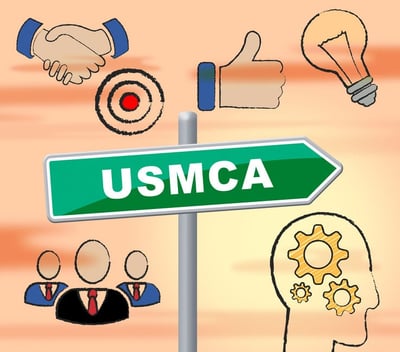USMCA/CUSMA Certification Of Origin: everything you need to know
The new trade agreement between Canada, US, and Mexico means importers need to be up to date on Certification Of Origin (COO) and the new rules and requirements of this free trade agreement. Find the new forms here.
What do importers need to know about Certification of Origin under the new USMCA/CUSMA?

- Advance rulings for origin issued under NAFTA will not be valid under the USMCA/CUSMA free trade agreement.
- Under USMCA/CUSMA, exporters, producers, and importers can issue a certificate (COO) only if the party certifying knows if the product qualifies.
- Should the importer provide the certification, the importer must ensure compliance, including:
- Having information, including documents, that demonstrate that the good is originating
- Have a reasonable reliance on the producer’s written representation or certification that the good is originating
Some US-specific information:
- A claim for preferential treatment in any form under the USMCA should contain the minimum data elements set out in the USMCA’s Annex 5-A (minimum data elements).
- USMCA contains new criteria for the Rules of Origin for automotive and automotive part imports that include increases in the regional value content (USCMA Ch. 4 – Rules of Origin).
Importers should thoroughly review the new agreement and its requirements to ensure products qualify for preferential treatment.
At what point in the process do importers file a COO?
Importers seeking preferential duties under the USMCA/CUSMA are obligated to provide a valid certification to their customs broker that certifies that the goods meet the regional content requirements and qualify for preferential duty.
What are some common mistakes importers make with COOs?
Make sure your goods qualify
Not all products coming from any of the USMCA/CUSMA territories qualify, so it’s important to double-check that your goods are eligible for benefits. Your products’ eligibility depends on the raw materials used to make the finished product.
Understanding if a product qualifies—or how much of a finished product’s parts (usually expressed as a percentage) can be of non-USMCA origin—can be an exceedingly complex process. As can understanding the “rules of origin” that drill down into a product’s component parts.
Make sure you understand the distinction between Wholly Obtained products or products “produced entirely.”
Make sure you get the tariff classification right
Assigning the proper tariff classification code is critical for paying the proper duty rate and taking advantage of the trade agreement’s benefits. Be particulate aware of goods classifies using origin criterion 4.2(a).
Double check your certification to ensure that your HST code is there and that it has the correct number of digits (6).
Fill that form in correctly
Make sure that:
- The certification is signed and dated.
- You’re using the new certification, not an old NAFTA form that still has the NAFTA statement above the signature.
- The blanket period is no longer than one year. Example: a form dated 2/17/2021 to 2/17/2022 is incorrect, this is one year plus a day. The correct period would be 02/17/2021 to 02/16/2022.
- The certification has valid signatures, and date of signature filled in.
- You’ve correctly entered blanket periods.
- The importer and producer fields are filled out. You may enter “various” or “unknown”, but don’t leave this part blank.
- You don’t include items that do not qualify under USMCA/CUSMA on the Certification.
Navigating the new USMCA/CUSMA is complex, especially ensuring your goods quality under the new requirements. We’re here to help. Contact our Free Trade Agreement specialists today.
Understanding Free Trade Agreements. It's what we do.

Latest Articles
- CBSA Verification Priorities - January 2026
- 7 ways Canadian importers reduce risk when ordering overseas
- Watch out for these extra charges on your freight bill
- Key differences between duty drawbacks and duty refunds for importers
- Mitigating container shortages and rising shipping prices for ocean imports
